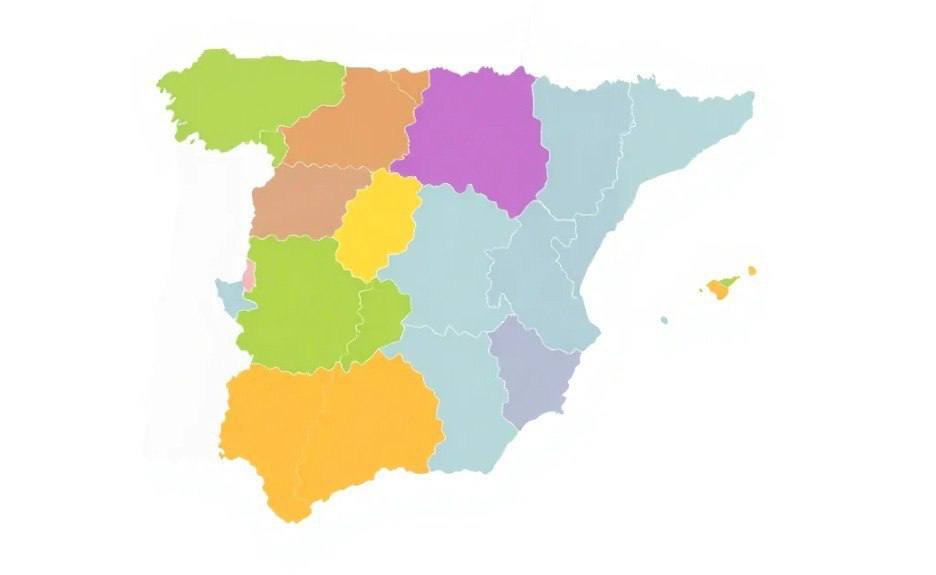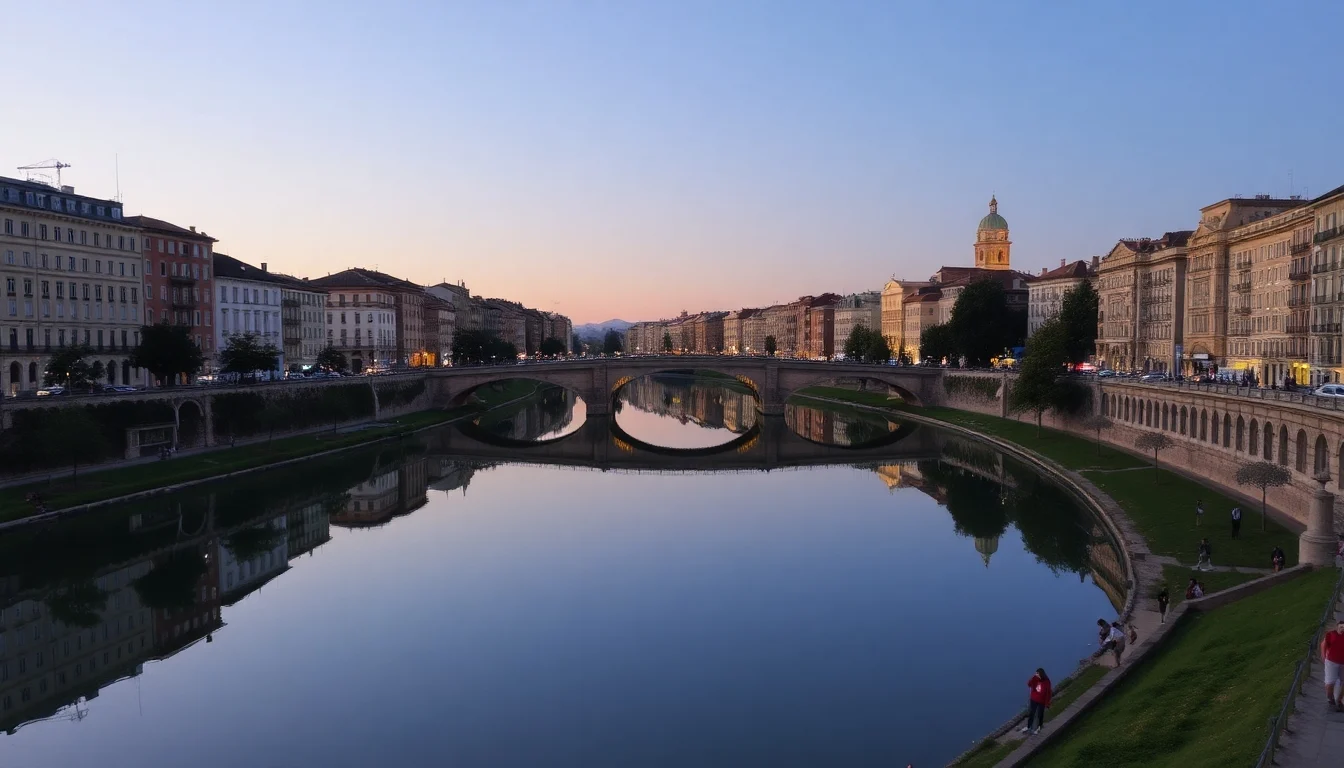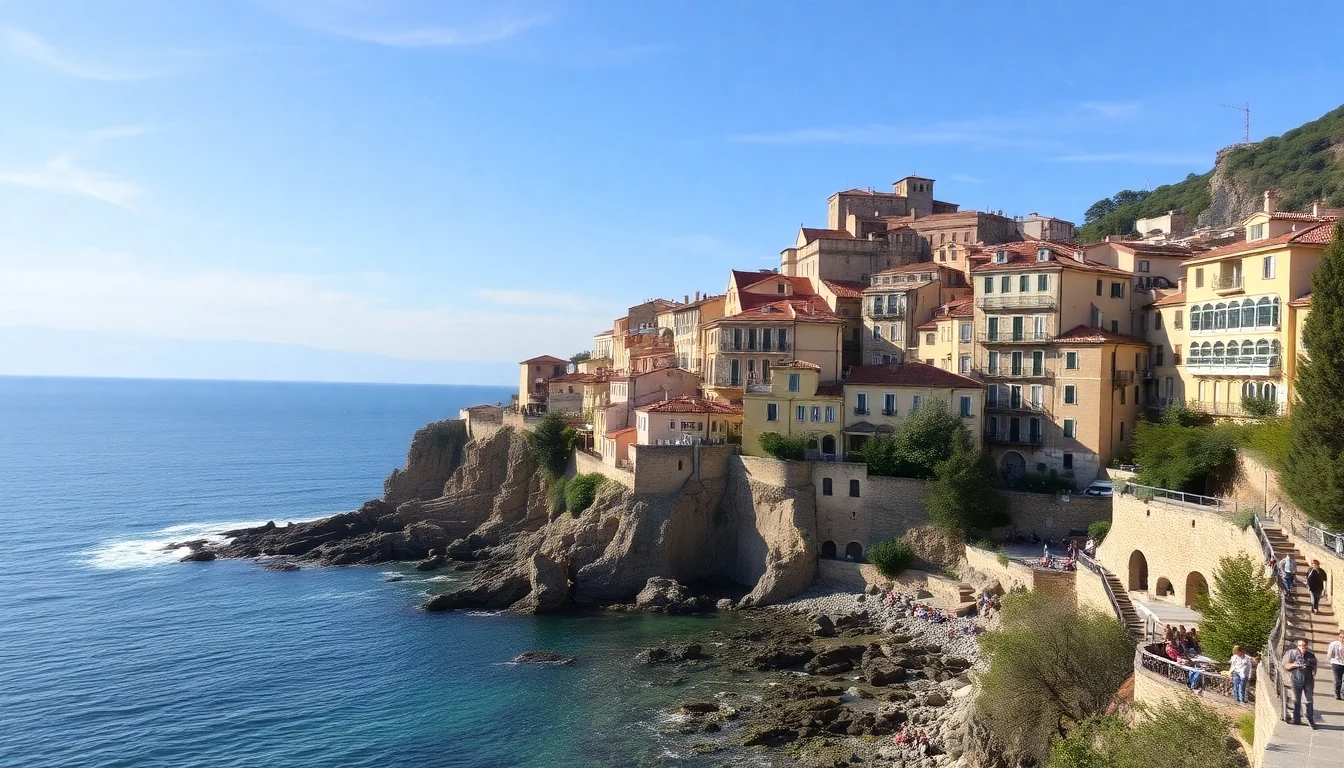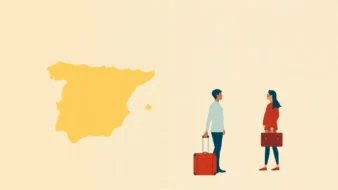Guide to the Regions of Spain: Where Is the Best Place to Live?
Spain impresses with its diversity and mild climate: from the sunny beaches of Costa del Sol to the mountain villages of Asturias, from bustling metropolises like Barcelona to the cozy towns of Castilla-La Mancha. If you love warmth, head to Andalusia; if you're drawn to history and architecture — Castilla y León; for work opportunities and energy — Madrid; and for nature and gastronomy — the Basque Country. But each region has its own subtleties — from language to infrastructure — that we’ll explore in this article to help you make the right choice.
 Spain is not just a country — it's a unique mosaic of 17 autonomous communities and 2 autonomous cities (Ceuta and Melilla). Each region has its own culture, traditions, and even language.
Spain is not just a country — it's a unique mosaic of 17 autonomous communities and 2 autonomous cities (Ceuta and Melilla). Each region has its own culture, traditions, and even language.
 Vitoria-Gasteiz represents industrial northern Spain with coastlines and hills. The climate is temperate with up to 1500 mm of annual rainfall, especially from October to March due to Atlantic influence — expect overcast skies but year-round greenery. The economy is one of Spain’s strongest: metallurgy, engineering, IT, and finance offer average salaries around €30,000 per year. Life is comfortable but pricey — rent in Bilbao starts at €800/month, with property prices from €3000/m². Jobs are mostly in industry and services, and speaking Basque (Euskera) opens more doors. The culture is unique thanks to Euskera, its world-renowned cuisine (like pintxos), and a strong sense of autonomy reflected in regional pride.
Vitoria-Gasteiz represents industrial northern Spain with coastlines and hills. The climate is temperate with up to 1500 mm of annual rainfall, especially from October to March due to Atlantic influence — expect overcast skies but year-round greenery. The economy is one of Spain’s strongest: metallurgy, engineering, IT, and finance offer average salaries around €30,000 per year. Life is comfortable but pricey — rent in Bilbao starts at €800/month, with property prices from €3000/m². Jobs are mostly in industry and services, and speaking Basque (Euskera) opens more doors. The culture is unique thanks to Euskera, its world-renowned cuisine (like pintxos), and a strong sense of autonomy reflected in regional pride.
 Catalonia lies in the northeast of Spain, where the Pyrenees mountains meet the sea. The climate is Mediterranean — around 10°C in winter and up to 30°C in summer — with little rainfall thanks to the mountains blocking precipitation. Catalonia boasts one of the strongest regional economies in Spain. Tourism brings in millions via Barcelona, industry is robust with textiles and automobile manufacturing, and the tech sector is rapidly expanding. The average salary is around €27,000 per year, but the cost of living is high: studio rentals in Barcelona start at €900 per month, and real estate prices begin at €4,000 per square meter. Job opportunities exist in tourism, tech, and services, though competition is fierce. Culturally, Catalonia stands apart: Catalan is mandatory in schools and government, and the independence movement adds a political edge that not everyone appreciates.
Catalonia lies in the northeast of Spain, where the Pyrenees mountains meet the sea. The climate is Mediterranean — around 10°C in winter and up to 30°C in summer — with little rainfall thanks to the mountains blocking precipitation. Catalonia boasts one of the strongest regional economies in Spain. Tourism brings in millions via Barcelona, industry is robust with textiles and automobile manufacturing, and the tech sector is rapidly expanding. The average salary is around €27,000 per year, but the cost of living is high: studio rentals in Barcelona start at €900 per month, and real estate prices begin at €4,000 per square meter. Job opportunities exist in tourism, tech, and services, though competition is fierce. Culturally, Catalonia stands apart: Catalan is mandatory in schools and government, and the independence movement adds a political edge that not everyone appreciates.
Go back to the blog
Administrative Structure
 Spain is not just a country — it's a unique mosaic of 17 autonomous communities and 2 autonomous cities (Ceuta and Melilla). Each region has its own culture, traditions, and even language.
Spain is not just a country — it's a unique mosaic of 17 autonomous communities and 2 autonomous cities (Ceuta and Melilla). Each region has its own culture, traditions, and even language.
The System of Autonomous Communities
After the 1978 constitution, Spain became a decentralized state, granting significant powers to its regions. What does this mean for an expat?- Regional independence: Communities manage education, healthcare, and culture independently. For instance, one region may invest more in schools, while another focuses on healthcare.
- Regional parliaments: Locals elect their own parliaments, which shape the region’s development — from taxes and infrastructure to holidays.
- Languages: In addition to Spanish, Catalan is spoken in Catalonia, Basque in the Basque Country, and Galician in Galicia. If you don’t speak the local language, adaptation may take longer.
Local Governance
On a more local level, Spain is divided into provinces and municipalities. This affects everyday life — from street cleanliness to bus schedules, park access, and local festivals.- Provinces: The middle tier between region and city. They oversee roads, coordinate large projects, and support municipalities.
- Municipalities: These are the cities, towns, and villages. Mayors and city councils decide on bike lanes, street cleaning frequency, and cultural events.
Northern Spain
Northern Spain — Vitoria-Gasteiz, Galicia, Cantabria, Asturias — features a lush, mild, and humid climate, rich traditions, and an economy based on industry, agriculture, and tourism. Expect frequent rain, distinctive customs, and limited career prospects outside major cities.Basque Country
 Vitoria-Gasteiz represents industrial northern Spain with coastlines and hills. The climate is temperate with up to 1500 mm of annual rainfall, especially from October to March due to Atlantic influence — expect overcast skies but year-round greenery. The economy is one of Spain’s strongest: metallurgy, engineering, IT, and finance offer average salaries around €30,000 per year. Life is comfortable but pricey — rent in Bilbao starts at €800/month, with property prices from €3000/m². Jobs are mostly in industry and services, and speaking Basque (Euskera) opens more doors. The culture is unique thanks to Euskera, its world-renowned cuisine (like pintxos), and a strong sense of autonomy reflected in regional pride.
Vitoria-Gasteiz represents industrial northern Spain with coastlines and hills. The climate is temperate with up to 1500 mm of annual rainfall, especially from October to March due to Atlantic influence — expect overcast skies but year-round greenery. The economy is one of Spain’s strongest: metallurgy, engineering, IT, and finance offer average salaries around €30,000 per year. Life is comfortable but pricey — rent in Bilbao starts at €800/month, with property prices from €3000/m². Jobs are mostly in industry and services, and speaking Basque (Euskera) opens more doors. The culture is unique thanks to Euskera, its world-renowned cuisine (like pintxos), and a strong sense of autonomy reflected in regional pride.
Galicia
Galicia, in the northwest, boasts lush forests and rugged coastlines. The climate is wet, with up to 2000 mm of annual rain, especially along the coast — an umbrella is a must. The economy relies on fishing (25% of Spain’s catch), agriculture, and tourism, making it affordable: rent in Santiago de Compostela starts at €500/month, and property prices from €1500/m². Jobs are mainly in traditional sectors, with few high-tech roles, making it appealing to remote workers. The culture has Celtic roots, the Galician language is co-official, and seafood (like octopus and mussels) plus festivals like Rapa das Bestas are regional hallmarks.Cantabria & Asturias
Cantabria and Asturias are picturesque northern regions with mountains and coastlines. The climate is mild and wet, with around 1200 mm of annual rainfall and stable temperatures (10–20°C), thanks to ocean winds. The economy is based on tourism, agriculture, and the food industry (dairy, cider), with a moderate cost of living: rent in Santander or Oviedo starts at €500/month, property from €1800/m². Jobs are mostly in tourism and farming, with limited career growth, especially in small towns. The culture is nature-driven: in Asturias, they drink cider; in Cantabria, they pride themselves on the Altamira caves and historic villages.Central Spain
Central Spain — Madrid, Castilla y León, Castilla-La Mancha, Extremadura — is where city pace meets historical calm, with scorching summers, chilly winters, and a lifestyle that ranges from pricey urban buzz to affordable rural comfort. Here, you’ll find career opportunities, medieval castles, natural spaces, and budget-friendly havens for those fleeing city noise.Madrid and the Capital Region
Madrid is the beating heart of Spain — a city humming with ambition, where the air is thick with both history and modernity. The climate is continental: summers scorch up to 40°C, winters drop to near 0°C. The economy is Spain’s powerhouse, driven by finance, tech, and tourism. Average salaries hover around €28,000/year, but costs are steep: rent for a studio downtown starts at €800/month, and property from €3500/m². Life here is like a high-speed train: traffic, crowds, subways zooming below — but everything’s at your fingertips, from international schools to top universities. Culture is a vibrant mix — Prado masterpieces, theater marquees, and tapas aromas at every corner. All in Spanish, yet with a global flair. This city suits those ready to race forward without glancing at the bill.Castilla y León & Castilla-La Mancha
These two regions are like ancient books steeped in the dust of time, where every town tells a story of castles and cathedrals. The climate is harsh and continental: fields scorch under 40°C in summer and stone walls chill in winter. The economy is grounded in agriculture, winemaking, and light tourism. Life is simpler: rent in Salamanca or Toledo starts at €400/month, with property from €1200/m². Jobs exist, but don’t expect sky-high careers — this is a land of vineyard workers and small-town hospitality. Culture is pure Spanish — Don Quixote roaming the plains, medieval alleys whispering of the past. Life here flows slowly, rooted in history and space.Extremadura
Extremadura is a quiet corner where nature breathes deeper than the people. Summers are hot, reaching 40°C, but winters are mild — like a wool blanket. The economy is weak, relying on farms and a trickle of tourists, which keeps life cheap: rent in Mérida starts at €300/month, property from €1000/m². Jobs are scarce, but for remote workers or retirees — it’s a haven. Roman arches and medieval towers speak of lost grandeur in soft Spanish. Living here means melting into serenity.The Mediterranean Coast
Spain’s Mediterranean coastline is not just about endless beaches and sunny days — it includes three distinct regions: Catalonia, Valencia, and Murcia. Each offers a warm climate and well-developed infrastructure, but differences in economy, culture, and daily life mean your choice will depend on your personal taste.Catalonia
 Catalonia lies in the northeast of Spain, where the Pyrenees mountains meet the sea. The climate is Mediterranean — around 10°C in winter and up to 30°C in summer — with little rainfall thanks to the mountains blocking precipitation. Catalonia boasts one of the strongest regional economies in Spain. Tourism brings in millions via Barcelona, industry is robust with textiles and automobile manufacturing, and the tech sector is rapidly expanding. The average salary is around €27,000 per year, but the cost of living is high: studio rentals in Barcelona start at €900 per month, and real estate prices begin at €4,000 per square meter. Job opportunities exist in tourism, tech, and services, though competition is fierce. Culturally, Catalonia stands apart: Catalan is mandatory in schools and government, and the independence movement adds a political edge that not everyone appreciates.
Catalonia lies in the northeast of Spain, where the Pyrenees mountains meet the sea. The climate is Mediterranean — around 10°C in winter and up to 30°C in summer — with little rainfall thanks to the mountains blocking precipitation. Catalonia boasts one of the strongest regional economies in Spain. Tourism brings in millions via Barcelona, industry is robust with textiles and automobile manufacturing, and the tech sector is rapidly expanding. The average salary is around €27,000 per year, but the cost of living is high: studio rentals in Barcelona start at €900 per month, and real estate prices begin at €4,000 per square meter. Job opportunities exist in tourism, tech, and services, though competition is fierce. Culturally, Catalonia stands apart: Catalan is mandatory in schools and government, and the independence movement adds a political edge that not everyone appreciates.


 06/05/2025
06/05/2025  Reading time: 10 min
Reading time: 10 min 



